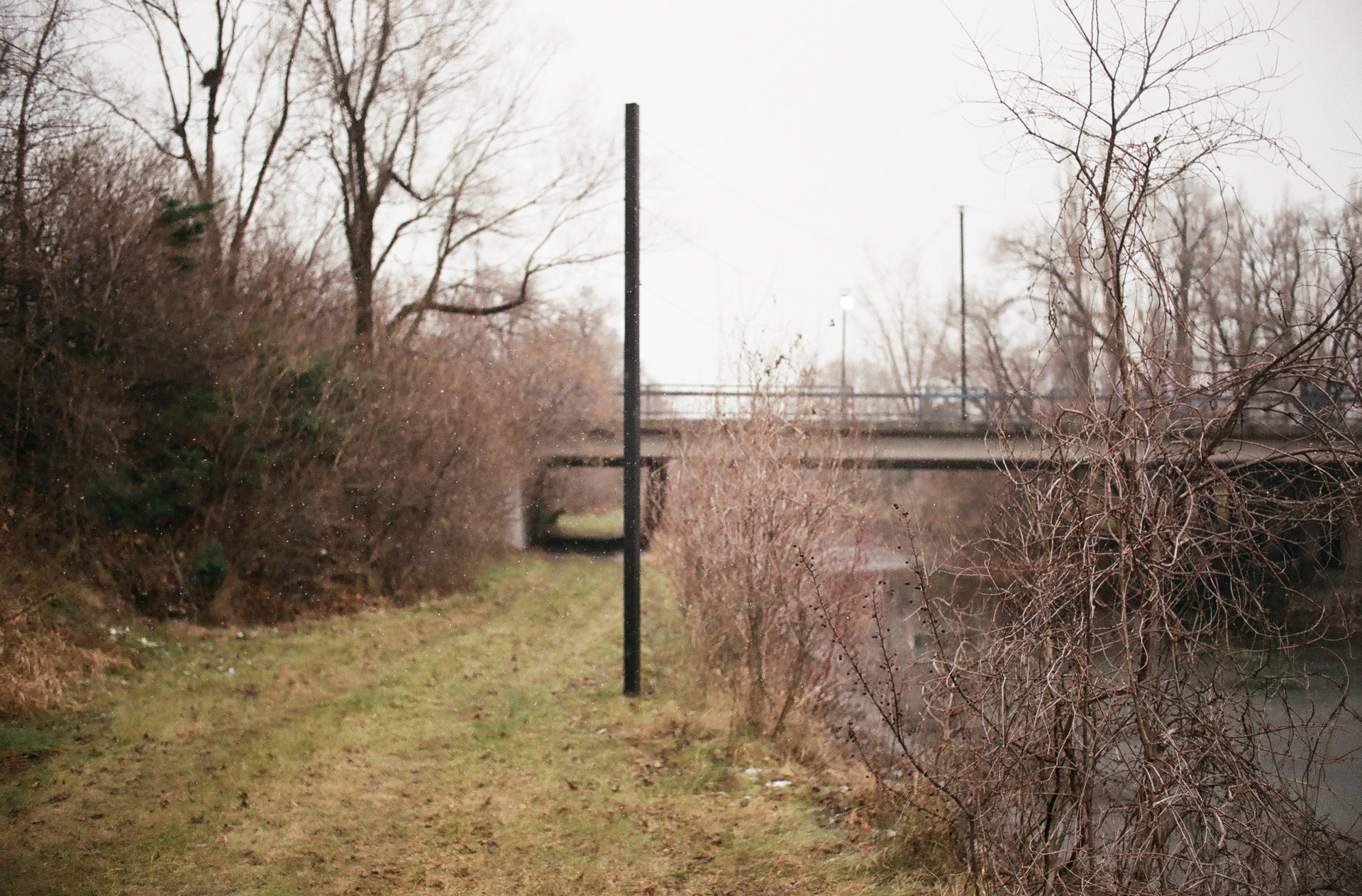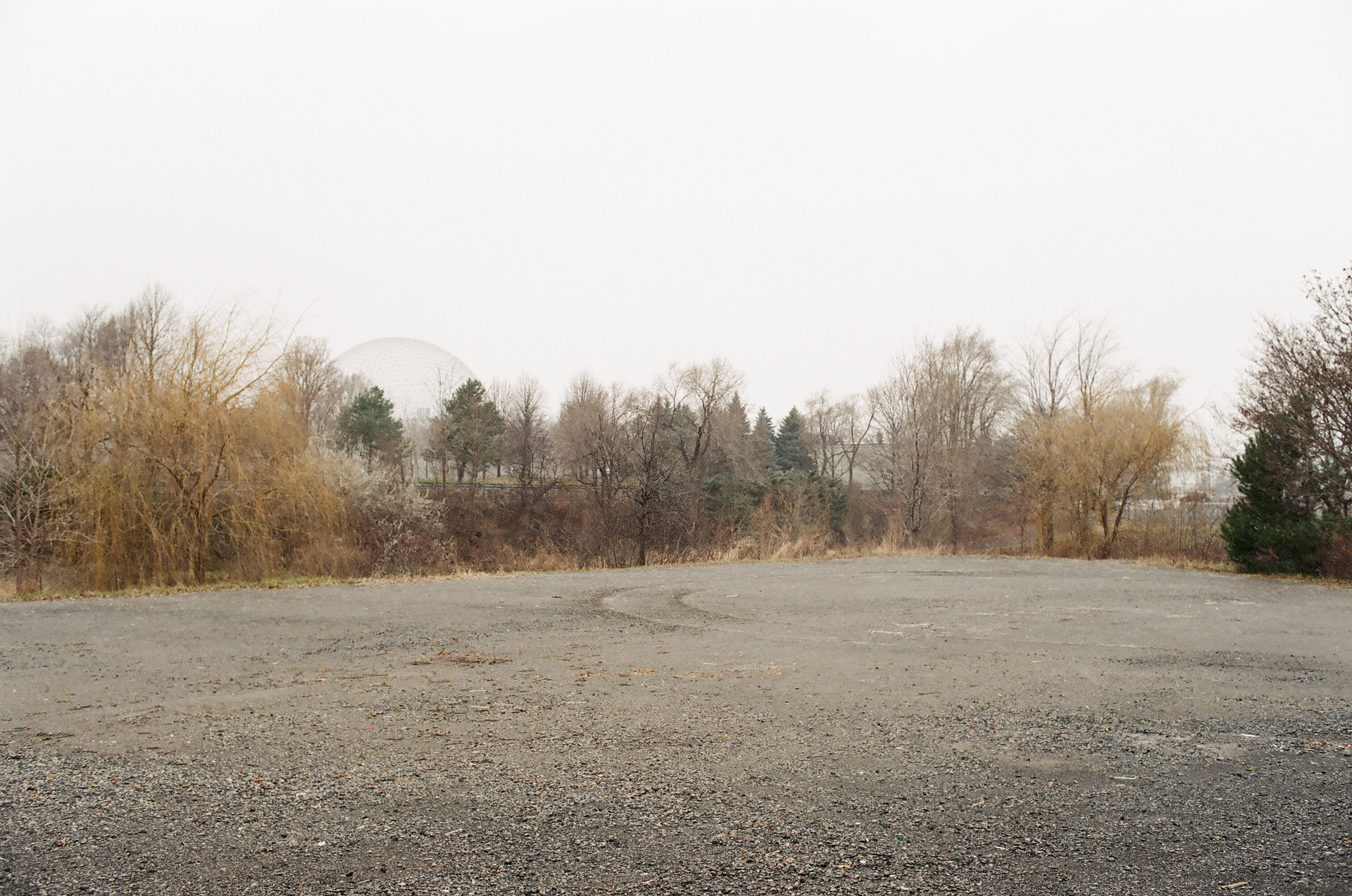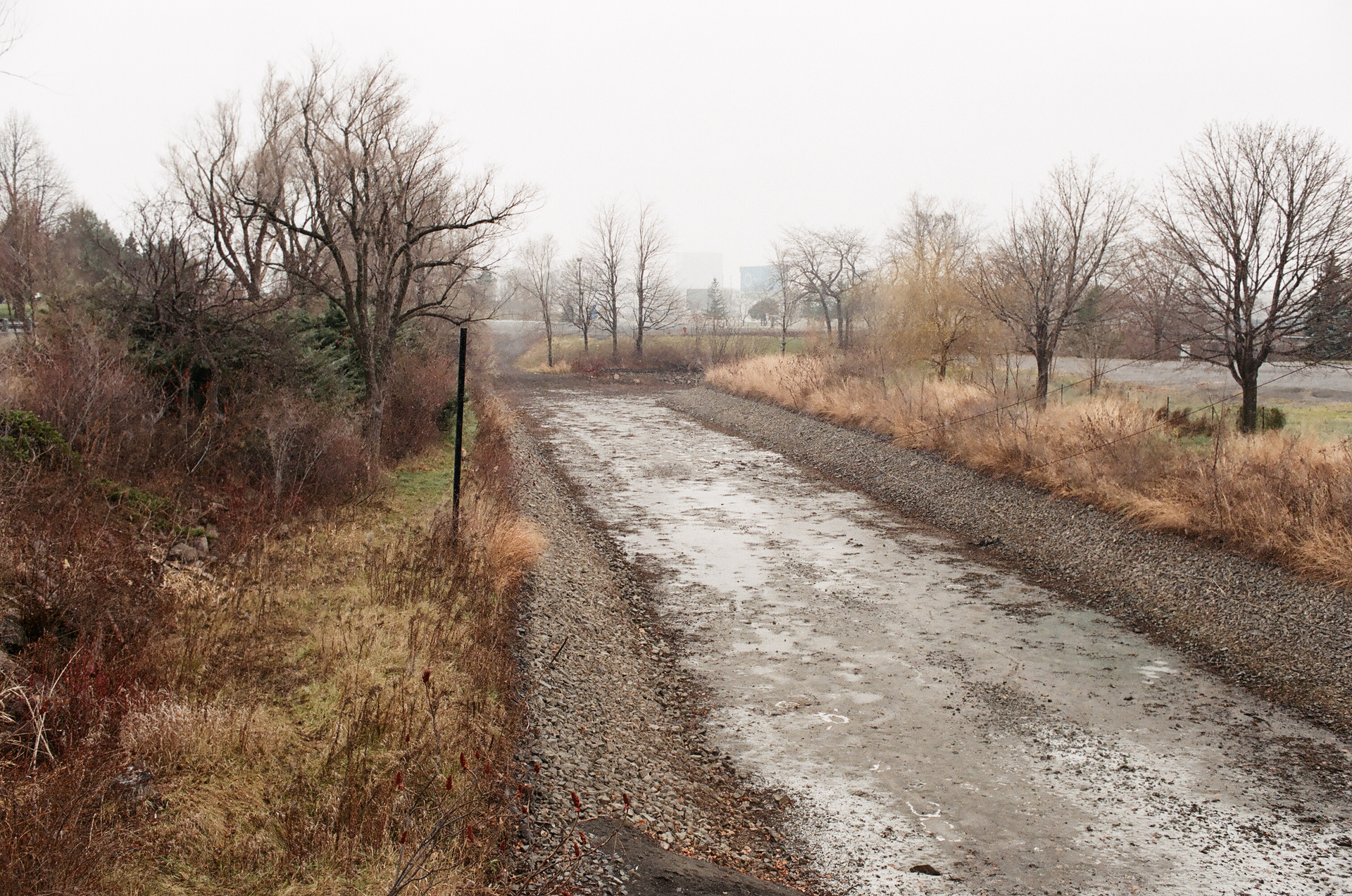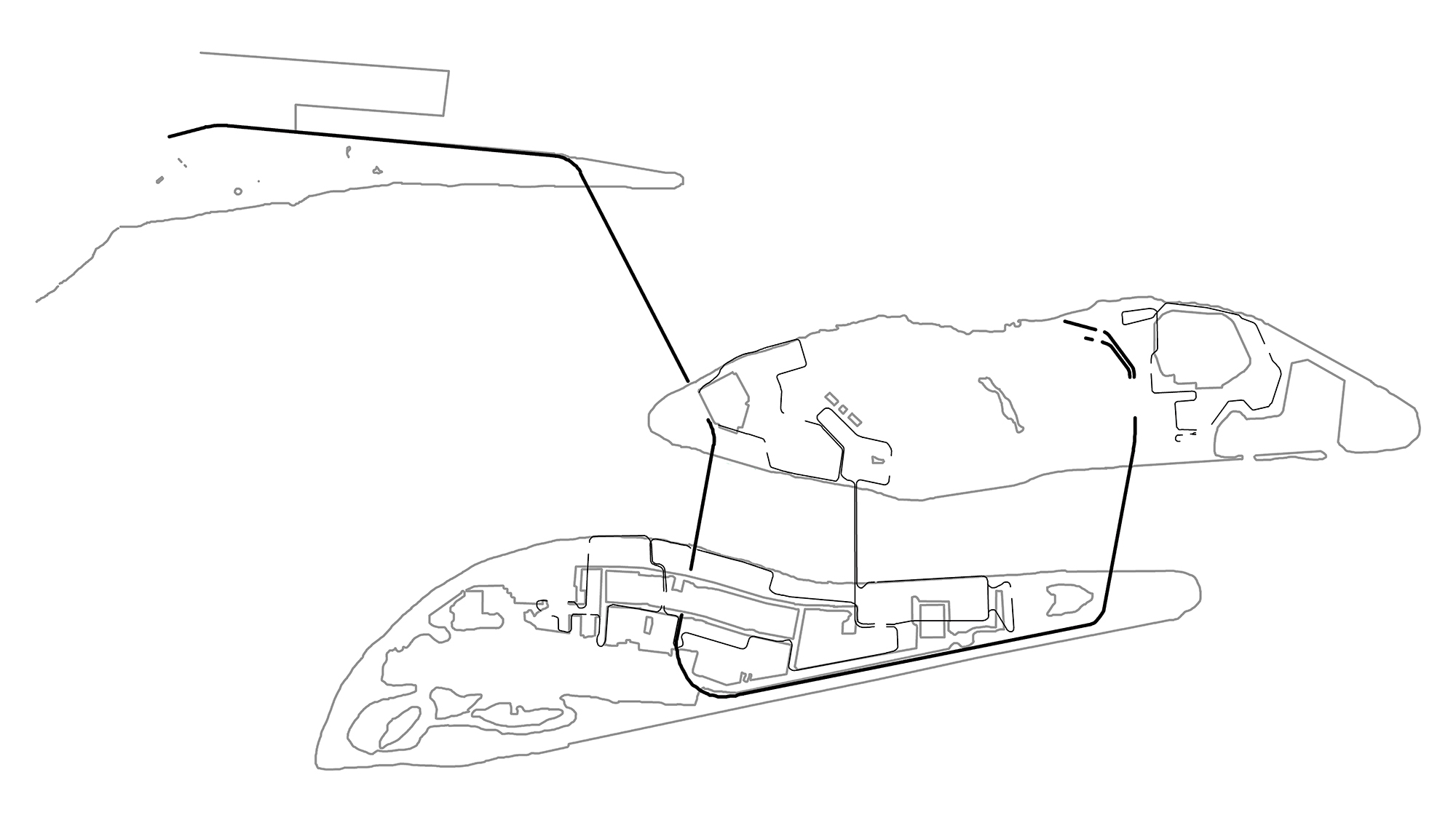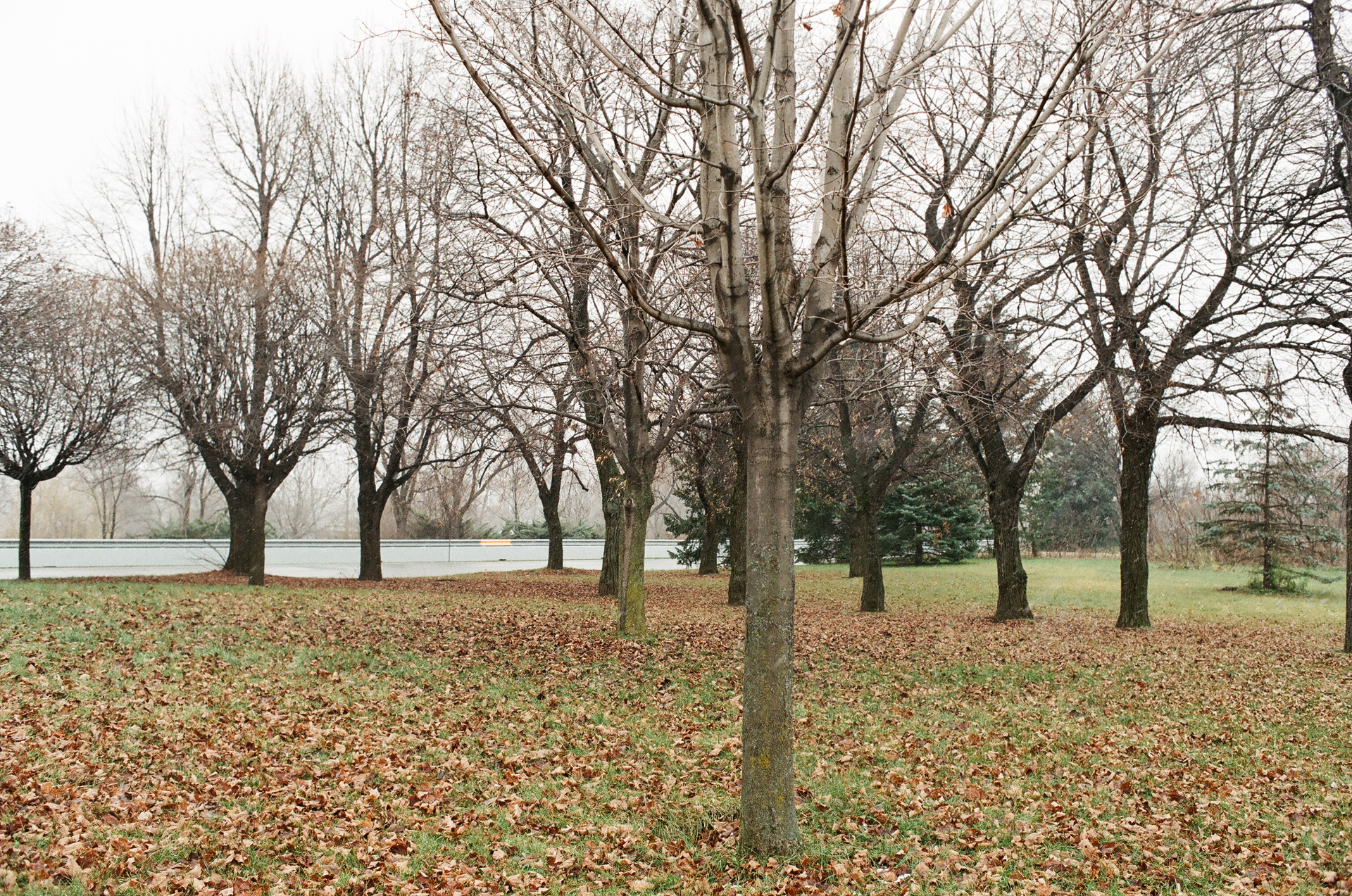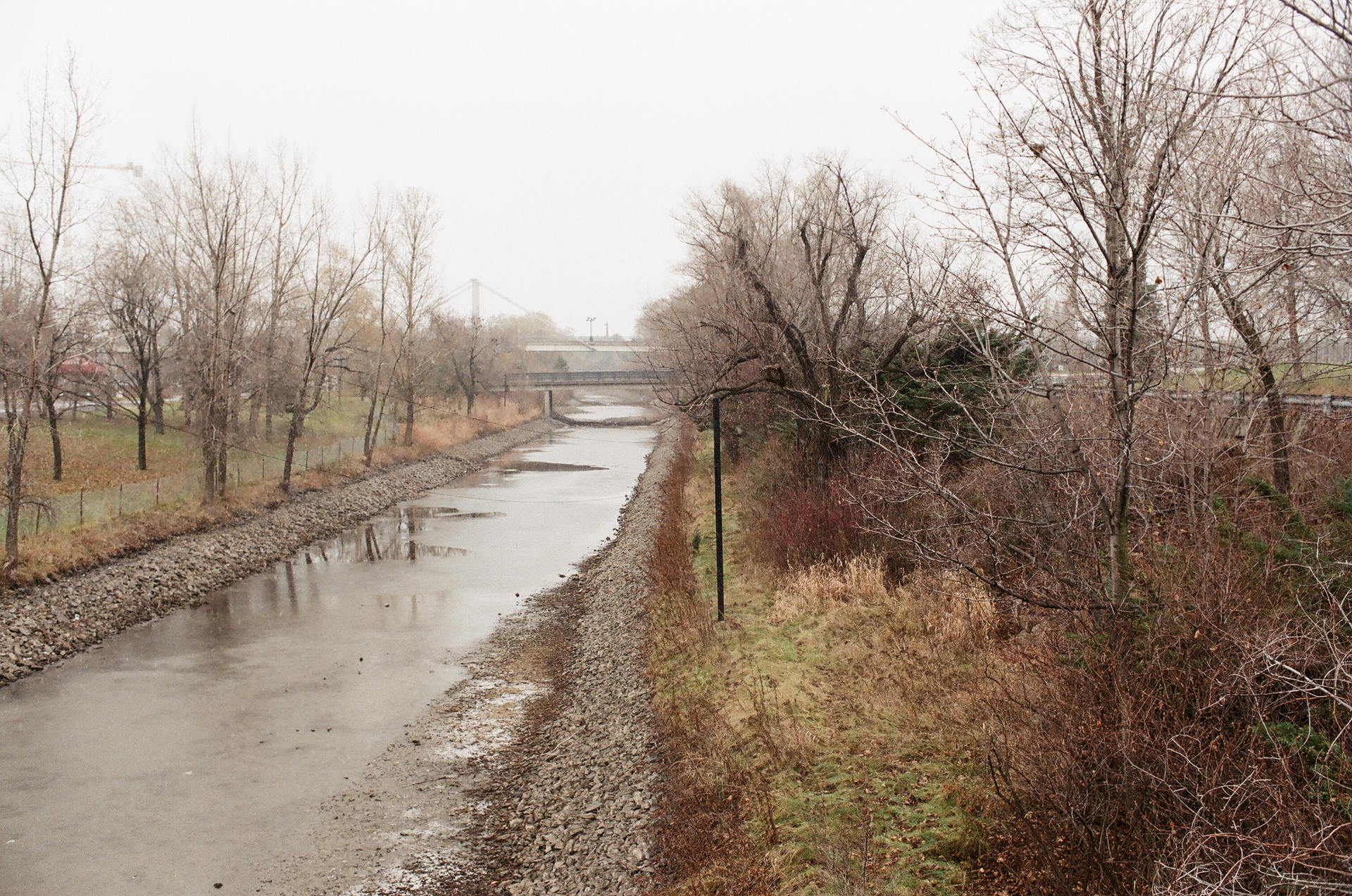The action of the science fiction film Quintet (Robert Altman, 1979) takes place during a nuclear winter. The sets are barren and post technological: a snowscape punctuated by derelict modern architecture and frozen machinery. Quintet was shot in the remains of the pavilions of the 1967 Montréal World's Exposition as well as in the territory of Nunavut, Canada. Altman uses the (nuclear) winter setting of Quintet – the expanses of white snow, the ice-encased structures, and the fogginess produced by condensation in the cold – to construct a diegesis that exists beyond our understanding of time and space.
This project maps the locations in the old Expo 67 site that were used in the film, investigating how the representation of the international, modern architecture and design of the Expo pavilions could shift from signifying promise and potential for social betterment to becoming an index of technological catastrophe and social decay. It considers how the architecture of Expo 67 – both as a site of technological spectacle and as an impromptu film set – has disappeared, looking for what is left of these sites and mapping this process of looking.
The map has three layers: islands shows the islands Notre-Dame and Sainte-Hélène as they were experienced when visited in the fall of 2011; diegesis is a map of the fictional, post-apocalyptic city where the action of the film Quintet takes place; terre des hommes is a map of Man and his World, the themed site of Expo 67.
Like most inhabitants of Montréal, I have quite often been to Île Sainte-Hélène and Île Notre-Dame but I am not really familiar with the activities that go on there; the islands are not part of the city that I make use of. Disembarking from the subway on a morning in mid-November at a time of year just before snow covers the city, I am surprised by the number of people getting off the train with me. There are a few tourists, who head towards the museum in the Biosphere, and the rest of the people make their way to a bus waiting at the stop across from the station. I quickly understand that their destination is the casino on the other end of the other island.
I am left pretty much alone as I make my way across the Cosmos Bridge that straddles the Lemoyne channel leading to Île Notre-Dame. A few city workers and a couple taking photographs are the only people I see before I approach the former French pavilion from Expo 67.
I find curious metal posts vertically marking the banks of the canals at regular intervals. Are they posts that carried electrical or telephone lines in the temporary city of Expo 67? I photograph these. Their geometric near perfection (as a series of repeated measured vertical lines) and their blackness stand out against the jumble of grey-brown bushes and tree branches that have taken over the once manicured landscape of the site.
A landscape made accessible to the public, a park, a place for recreation, for repose, is under surveillance and subdivided into sections with different levels of accessibility. A section that generates revenue, a casino, is cordoned off, behind parking lots and guard boxes, from casual strollers who might wander into the complex. Beyond the defined tourist attractions are landscaped green spaces interspersed with the infrastructure of spectacle (the Formula 1 track and grandstands), the architecture of municipal operations, administrative buildings and sheds, and features that seem redundant and anomalous to the goings on in the park and to the layout of the artificial island: half drained canals crossed by a series of bridges that are not connected to any roads, black columns, and electrical posts carrying no wires punctuate the canal banks at regular intervals. It is in this curious geography that the more effaced traces of the Expo site are to be experienced, and where the locations for the film Quintet could somehow be imagined.
With the foliage gone and the snow yet to settle, the short history of the artificial island bares itself to me. The landscaped park gives way to wide expanses of gravel, bleak and empty in the grey half-light of November. In the summer, these parking lots and maintenance yards are background to the natural and recreational attractions of the island. In late autumn, they dominate the landscape like the fields of snow and ice that set the scene in the opening shots of Quintet. From the gravelled parking areas, narrow roads lead across rusted bridges crossing half-drained canals. The expo site was laid out on islands of reclaimed land surrounded by a network of canals, basins, and small lakes. It was conceived as a small-scale cityscape built on water, reminiscent of Venice or Amsterdam, but designed on a modern grid.
The casino occupies not only what was once the French pavilion but also several outlying buildings, including the former Québec pavilion, forming a concourse surrounded by barriers, parking lots, roads, and canals. But this is not where I want I go. I am not interested in what has been rebuilt and reconstructed. I am looking for traces, traces of a city that never existed, traces of a film that remembered a city that no longer existed.
The traces of the film set are even more elusive than those of the world exposition. A detailed identification and analysis of the Expo 67 locations used by Altman in the filming of Quintet is made by Steve Lyons in his comprehensive article from 2009, 'Memory of a Post-Apocalyptic Future. Whitening Skeletons and Frozen Time in Robert Altman’s Quintet and Expo 67’s Man the Explorer Pavilion'.
The ruins of the unrestored pavilions – the sets of Quintet – have all but vanished. A few blocks of concrete foundations jut out from the earth. The cold and damp of many long winters have eroded the wondrous structures of that imaginary city. I walk, trying to envision the layout of the landmarks, but they remain invisible, lost in the vegetation that has overgrown the site. The infrastructure of mass entertainment, the casino complex, and the formula 1 track make me lose my bearings. Like 'the essential Siberia' referred to by Jan Borm in his paper 'Yakutsk, lieu de mémoire sibérien et européen interculturel' (2012), which could only exist in the absence of the author, the fantastic, impossible city that was Expo 67 can only exist in its own absence.
The remains of the temporary city are barely perceptible. Looking closer, the physical features of the artificial island built from the earth that was dug to make the first tunnels of Montréal's subway system show themselves: the basins, canals, and embankments. Some of the roads and footpaths can still be followed. Most of the bridges, which cross the canals but now lead nowhere, are intact.
